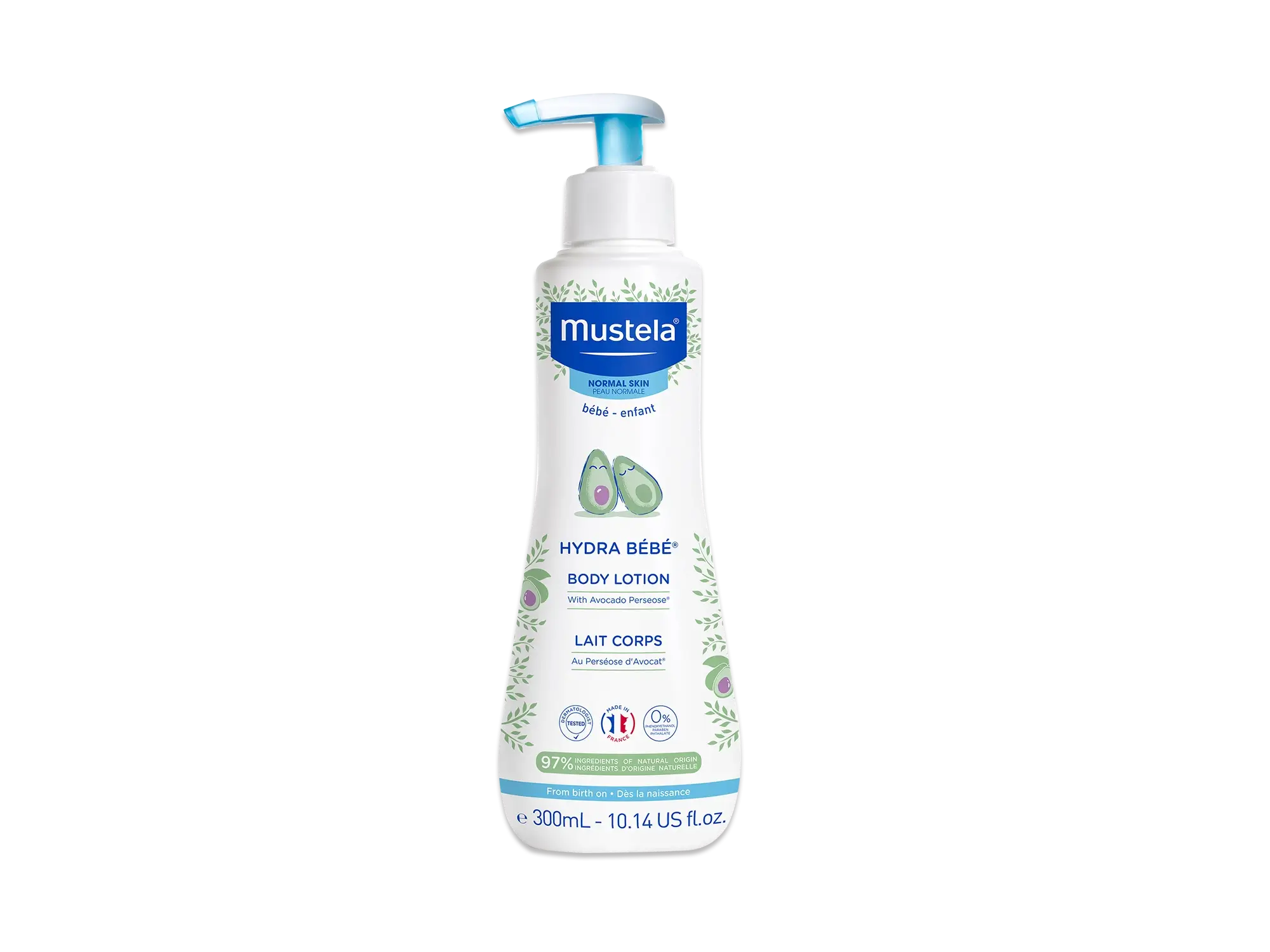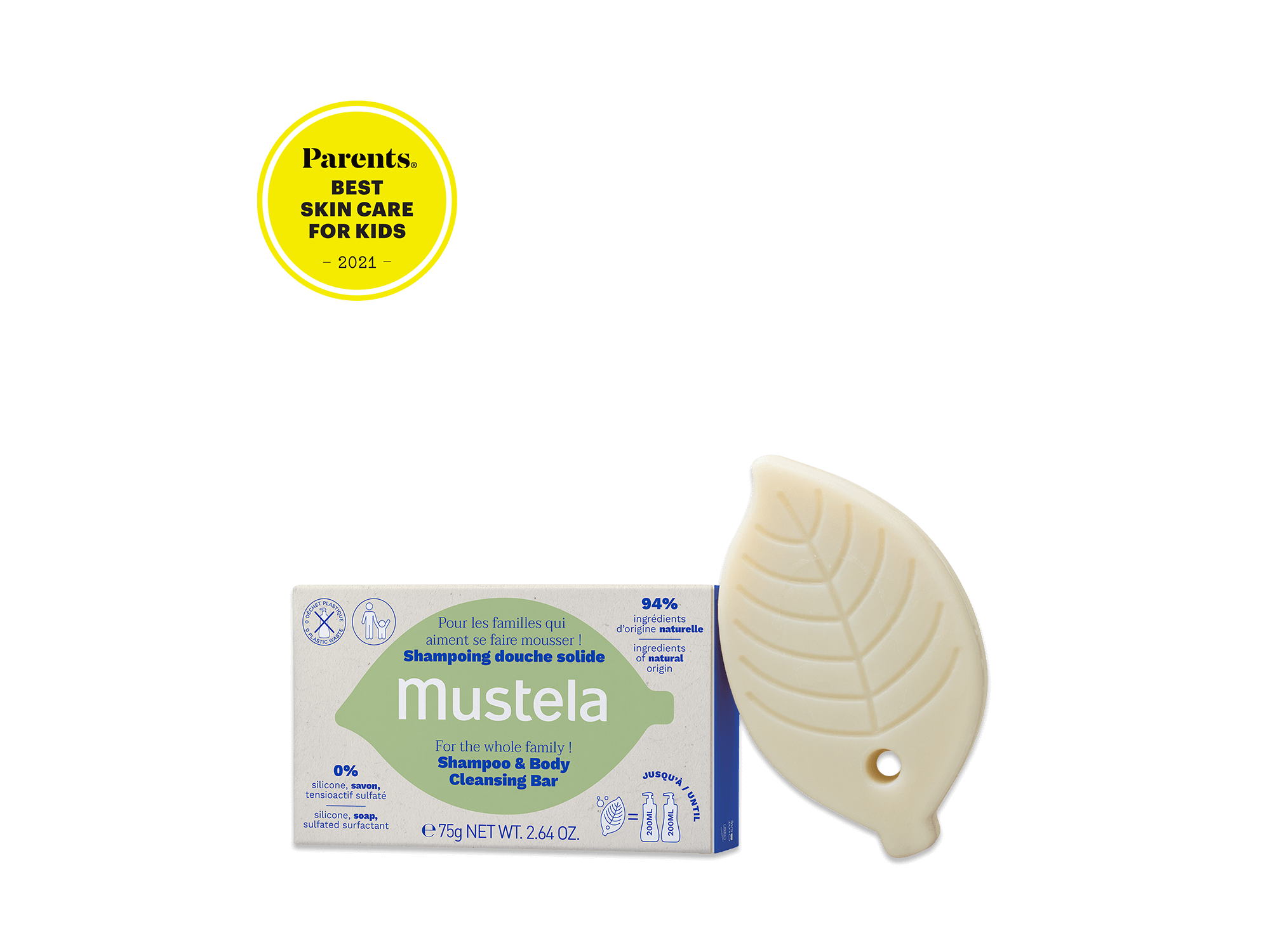While some infants sleep soundly and don’t need any help drifting off, others struggle to sleep through the night and may need a little guidance. That’s where sleep training comes in.
Like many aspects of parenting, sleep training can be a challenging process. You might not know what the most effective sleep training methods are or how to help your little one develop healthy sleeping habits. That’s what the baby experts at Mustela are here for.
This post will provide all of the information you need to help your little one sleep well. We will explain what sleep training is, when it should begin, the four most popular sleep training methods, and five effective tips for helping your little one rest well.

Table Of Contents
- What Is Baby Sleep Training?
- When Should Sleep Training Begin?
- Six Approaches To Sleep Training
- Five Tips For Baby Sleep Training
- What Not To Do During Sleep Training
- Sleep Training For Naps
What Is Baby Sleep Training?
Sleep training is the process of helping your baby fall asleep on their own and sleep soundly through the night. It’s important to note that sleep training isn’t always necessary.
If you’re one of the few parents whose little one has no trouble sleeping, consider yourself lucky! You don’t need to worry about sleep training.
However, most babies will struggle with sleep at some point during the first year of their life. This is completely normal and not a cause for concern. At the same time, it’s something that can be addressed with sleep training.
A crucial safety tip before we move on: remember to always put your baby down to sleep on their back. Never, ever let your little one sleep on their tummy, as this greatly increases the chance of SIDS. Also, be sure to remove any pillows, blankets, and toys from your baby’s crib.
When Should Sleep Training Begin?

Sleep training can begin at any time between four and six months of age. Prior to the four-month mark, your baby is too young to develop a circadian rhythm, so sleep training isn’t effective. In other words, for the first four months, your baby will simply sleep when they are tired.
For example, one-month-olds may sleep as many as 16 hours per day, and they tend to only stay awake for a few hours at a time. But around four to six months old, your baby has developed enough to begin establishing a sleep cycle. That’s why most experts recommend beginning sleep training some time in that window.
However, just because sleep training can begin between four and six months does not mean that it must begin during that time frame. For some parents, sleep training might not be necessary before their baby hits the eight-month mark, when many babies experience sleep regression.
Use your best parental judgment about when to begin sleep training. After all, you know your baby better than anyone else. You should also note that some sleep training strategies tend to work better at different ages.
Six Approaches To Sleep Training
There are different approaches to sleep training, each with their own school of thought. Here are the most common sleep training methods.

1) Cry-It-Out Method
The cry-it-out method of sleep training is just what it sounds like — letting your baby cry until they fall asleep. Supporters of this method believe it teaches infants to soothe themselves. This, in turn, should lead to your baby developing the ability to consistently fall asleep on their own.
The cry-it-out method is also sometimes called the “extinction method” because sleep support from mom and dad is completely removed.
However, the cry-it-out method is controversial. Some medical experts have warned against taking a purely cry-it-out approach to sleep training.
Crying for extended periods of time releases a chemical called cortisol in the brains of young babies, which can cause developmental issues and possibly lead to emotional problems later in life.
At the same time, there is evidence that cry-it-out sleep training has no effect on the emotional well-being of children. Other research even suggests that the cry-it-out method is effective at helping babies establish healthy sleep cycles.
Ultimately, the only conclusion that can be drawn is this: the cry-it-out method is controversial and the science is not clear on whether or not it’s a safe and effective sleep training method.
Additionally, this method should only be tried with children who are old enough to sleep through the night without a feeding.
2) No Tears Method

The no-tears sleep training method, as the name suggests, encourages parents to comfort their babies if they begin crying while trying to doze off. So, if you put your little one to bed and they fall asleep without incident, then you’re good to go! No problem.
On the other hand, if your baby begins to fuss when you put them to bed, then you should return to comfort them. This may include holding your baby, rocking them, singing lullabies, or simply rubbing their head as they drift off.
The idea is to reassure your baby until they fall asleep. This will help them to feel loved and allow them to sleep comfortably. This will give your little one peace of mind and eventually give them the ability to fall asleep independently.
You’ll see this method discussed under different names, including the “pick-up-put-down method.”
The no-tears sleep training method is not without its critics. Some say that constantly comforting your baby will actually prevent them from developing the ability to self-soothe and drift off to sleep alone. Much like the cry-it-out method, there is no clear scientific conclusion to be drawn.
As this is the gentlest out of all of the sleep training methods, it’s suitable for children of any age.
3) Ferber Method
The Ferber method of sleep training can be seen as the middle ground between the cry-it-out method and the no-tears method.
Invented by and named after Dr. Richard Ferber, the director of the Center for Pediatric Sleep Disorders at the Boston Children's Hospital, this sleep training method recommends slowly reducing the amount of comfort you provide your baby with.
At the beginning of sleep training, this method calls for comforting your little one at regular time intervals. Let’s say that you check on your little one every three minutes, talking to them and touching their head, until they doze off.
Then you would slowly increase the time intervals between check-ins. Perhaps you add one minute per week. This allows your child to slowly adjust to soothing themself and falling asleep independently.
The Ferber method is also sometimes called the “controlled crying method,” the “check and console method,” and the “graduated extinction method.” It can be used with babies from four months old up to eighteen months old.
4) Fading Parent Method
The fourth major approach to sleep training is known as the fading parent method. This method is similar to the Ferber method except, rather than reducing the amount of time between check-ins with your baby, you gradually reduce the physical distance at which you provide comfort.
In the beginning, you stand directly over your baby’s crib while they fall asleep. While picking your baby up is not recommended, you may sing to them, hum softly, or rub your little one’s head.
Then, over time, you slowly increase your distance from your baby’s crib. The fading parent method often suggests sitting in a chair close to your baby’s crib and slowly moving the chair away from the crib. For this reason, the fading parent method is often called the “chair method.”
The idea is to slowly work your way toward the door until you are no longer in the room. At that point, if all goes according to plan, your baby will be an independent sleeper.
This sleep training strategy is recommended for babies three to six months of age and older.
5) Bedtime Routine Fading
This method is all about gradually phasing out the things that your little one recognizes as part of a sleep time routine until they reach the point that they’re falling asleep on their own without help.
Establish a set routine for bedtime with whatever things work best for soothing your child, whether it’s rocking, nursing, or something else. Then gradually decrease the amount of time you spend doing those things.
Theoretically, the fact that you went through the routine will be enough to send the signal to your baby that it’s time for sleep, but they won’t notice that the time you spend on the routine is diminishing.
Eventually, they’ll get past the point of needing to “go through the motions” of the bedtime routine at all. In essence, you’re slowly shifting the “work” it takes to get your baby to sleep from yourself to your baby until they can do it all on their own.
As a gentle sleep training method, bedtime routine fading can be considered for babies of any age.
6) Bedtime Hour Fading

The objective of this method is to eliminate the gap between your child’s “natural bedtime” — when they’re ready to actually fall asleep — and when you put them down for the night.
If you put your baby down for the night at the same time each evening but they consistently fuss for about a half-hour before falling asleep, try waiting until the time they typically doze off to put them in the crib.
Maintain this routine for a few nights, then shift bedtime forward by a quarter-hour. Wait four more nights and then shift baby’s bedtime forward another 15 minutes.
Repeat until you’re at the time when you actually want to put your baby to bed for the night. With luck, this will “reprogram” your child’s sleep habits so that they’re used to falling asleep at your desired time.
Since bedtime hour fading is more based on timing rather than how you respond when your baby fusses, it can be used with any baby old enough to start sleep training.
Five Tips For Baby Sleep Training
Regardless of which sleep training method you use, these five tips will help your little one establish a healthy sleep cycle.

1) Develop A Nighttime Routine
A calming nighttime routine will help your baby relax and know that it will soon be time to sleep. Your evening routine can include a feed or a gentle massage.
Try a warm bath with Mustela Bath Oil and Gentle Cleansing Gel to take special care of your little one’s delicate skin and prepare them for sleep at the same time, and dress them in Stelatopia Skin Soothing Pajamas if they have eczema-prone or sensitive skin.
2) Choose A Bedtime And Be Consistent
It’s essential to always put your little one down to bed at the same time every night. Most experts recommend 7:00 p.m. to 8:00 p.m. or somewhere in-between.
Babies may not be able to tell time, but by the time they’re old enough to begin sleep training, they’ve started to learn the rhythm of day and night. Consistency helps keep their internal clocks calibrated and gives them a sense of security.
3) Create Daytime Activities
Your little one’s brain and body are developing at an incredibly rapid pace. They need opportunities to practice new skills and satisfy their curiosity about their world, or their pent-up energy may result in restlessness at bedtime.
Having a busy day full of activities will keep your baby stimulated and allow them to sleep well at night. This can include everything from story time to tummy time.
4) Do What Works Best For Your Baby
The best sleep training method is the one that works for you and your baby. There’s no need to follow one of the established methods if you’ve found something else that’s already working.
5) Be Patient
Many infants experience sleep regression, which is a period of time when their sleep habits change and they aren’t sleeping for as long during the night as they typically do.
For example, a baby who once slept for eight uninterrupted hours overnight may begin waking once or twice to feed during that time.
Sleep regression is the result of growth spurts that occur most commonly around six weeks, four months, and six months, but some babies may experience fewer periods of sleep regression, while others experience more. This is perfectly normal. Just be patient and consistent.
What Not To Do During Sleep Training
Now we’ll offer some warnings about how to avoid the most common pitfalls parents fall into when they’re sleep training their little ones.
Don’t Respond Too Quickly
Even if you’re using a sleep training method in which you respond to your child’s cries, don’t make the mistake of responding too quickly. Rushing to your child’s side at the first sound of fussing is counter-productive.
Give them a chance to self-soothe, or they won’t learn to do it. Intervene only when the length and severity of their outbursts make it clear they’re unlikely to get back to sleep on their own.
You may be surprised to discover that your little one is actually better at settling themselves back down than you thought.
Don’t Try To Make The House Silent
You might think that to give your baby the best possible chance of falling asleep on their own, you need to eliminate everything that could possibly disturb them as they doze off.
But you want your baby to learn to sleep through normal, moderate household noise. It’s not realistic to keep tip-toeing around the house forever, and if your baby becomes used to total silence, they’ll only become more sensitive to ordinary sounds.
Don’t Let Your Baby Nap Whenever And Wherever They Want

By the time you start sleep training, your baby should be out of the newborn stage when napping occupies most of their time, and that means you’ll want to pay a bit more attention to when and where they take naps.
Some naps are necessary, but if at all possible, try to make sure they happen at home. Letting them get used to falling asleep in the car or stroller can make it harder to get them to sleep in the crib.
A consistent sleep schedule is also key to successful sleep training. Naps at random times during the day can make it harder for you to establish a nighttime routine.
Don’t Put Them Down Fully Asleep
For successful sleep training, you want to put your little one down for bed when they’re drowsy but not yet actually asleep.
If you only let them fall asleep in your arms, that’s the only environment they’ll learn to fall asleep in and you’ll have to rock them to sleep again each time they wake.
The goal of sleep training is to teach them to soothe themselves to sleep (and back to sleep) on their own in the crib.
Don’t Keep Them Up Too Late
If you think that the reason your baby won’t go to sleep at night is that they just aren’t tired enough, you might be tempted to try pushing back bedtime. But keeping your baby up too late to try to tire them out is a bad idea.
There is such a thing as “too tired to sleep,” and bedtime consistency is an important part of sleep training. Although some sleep training methods, like the “bedtime hour fading” technique, involve a shift in baby’s bedtime, this is done with planning as part of a system.
In general, you should never intentionally keep your baby up later in hopes that it will make them go to sleep faster when you finally put them down.
Sleep Training For Naps
Up until now, we’ve focused our whole discussion on getting your baby to go down without fuss at bedtime and sleep through the night, so we should take some time to also talk about sleep training for naps.
Sleep training your baby for naps is possible, but it can be different from sleep training for bedtime. According to some experts, nighttime sleep and napping sleep actually involve different parts of the brain.
A lot depends on the individual child. Some parents find that sleep training for naps is harder because their children are less tired, while others find that their little ones love to nap but wake up over and over at night.
All of that to say you might find that a method that gives you good results for nighttime sleep training doesn’t work for naps, and vice versa. Starting with the same method is fine for simplicity’s sake, but don’t be afraid to adapt.
You also don’t have to work on nights and naps at the same time. Some parents find that it’s easier to tackle nap training first since the “stakes” are less high during the day than in the evening when you’re exhausted and desperate for your baby to sleep.
Sleep Training Success With Mustela

There is no “best” sleep training method, but there is a best method for you and your baby. It just may take some time and careful consideration to figure out what that is.
No matter which sleep training approach you take, remember to trust your parental instincts and do what seems most effective for your child. Patience, consistency, and the right balance of daytime naps and activities are also essential for any strategy.
Mustela products, like our Bath Oil, Gentle Cleansing Gel, and Skin Soothing Pajamas, can become an essential part of a bedtime routine that helps your little one relax for a night of cozy, sound slumber during sleep training.
Stick with it. Your little one will be sleeping soundly through the night in the blink of an eye!

















